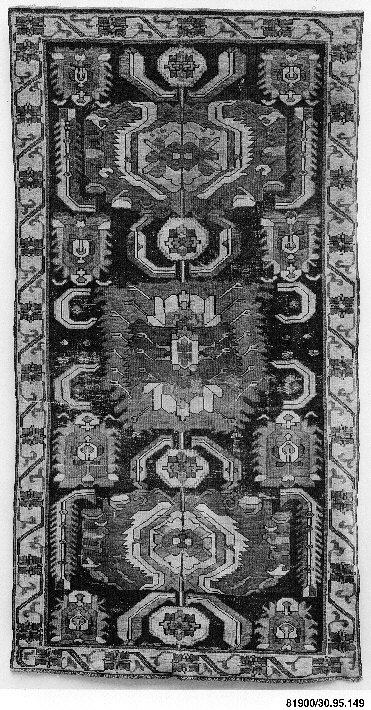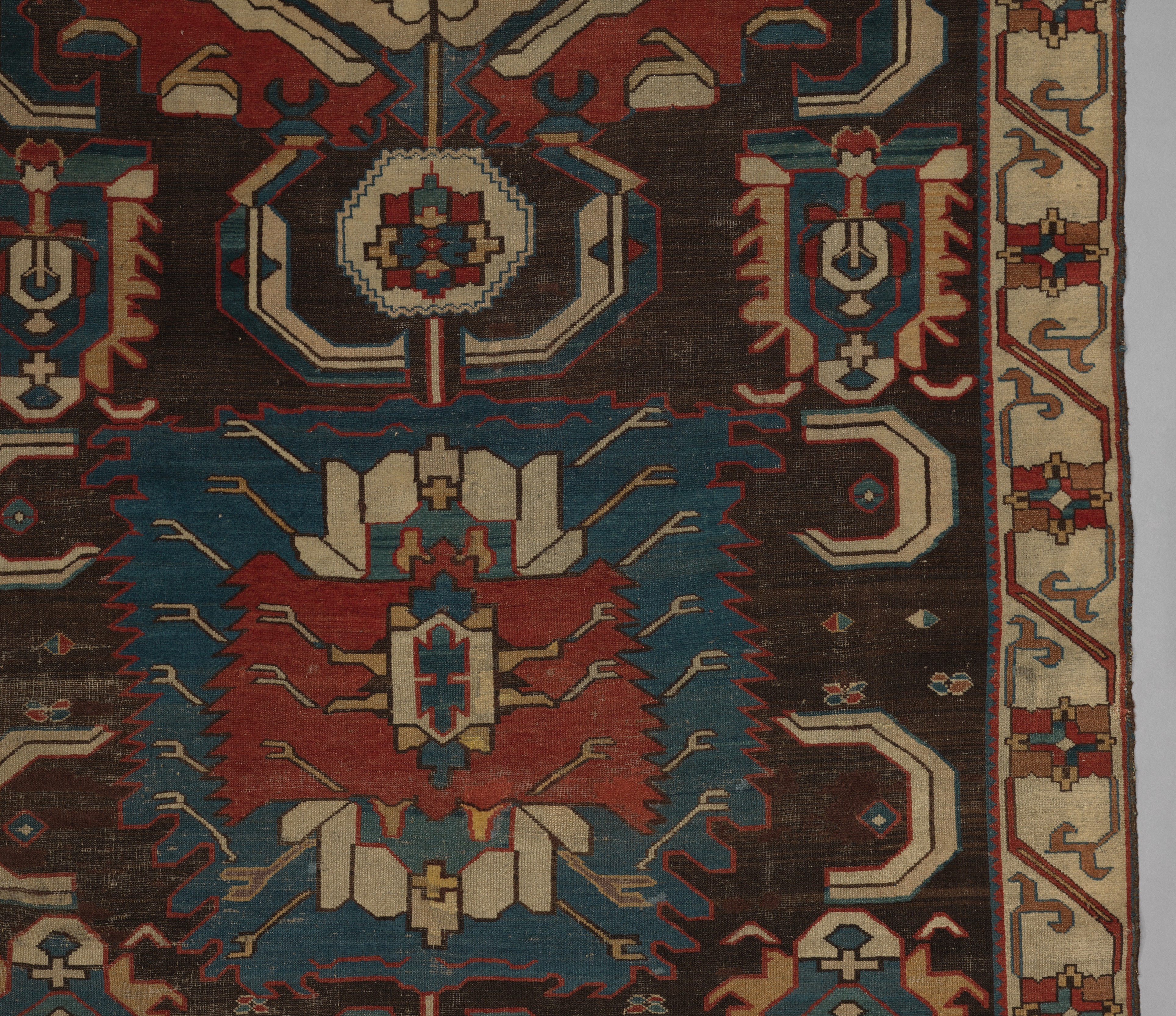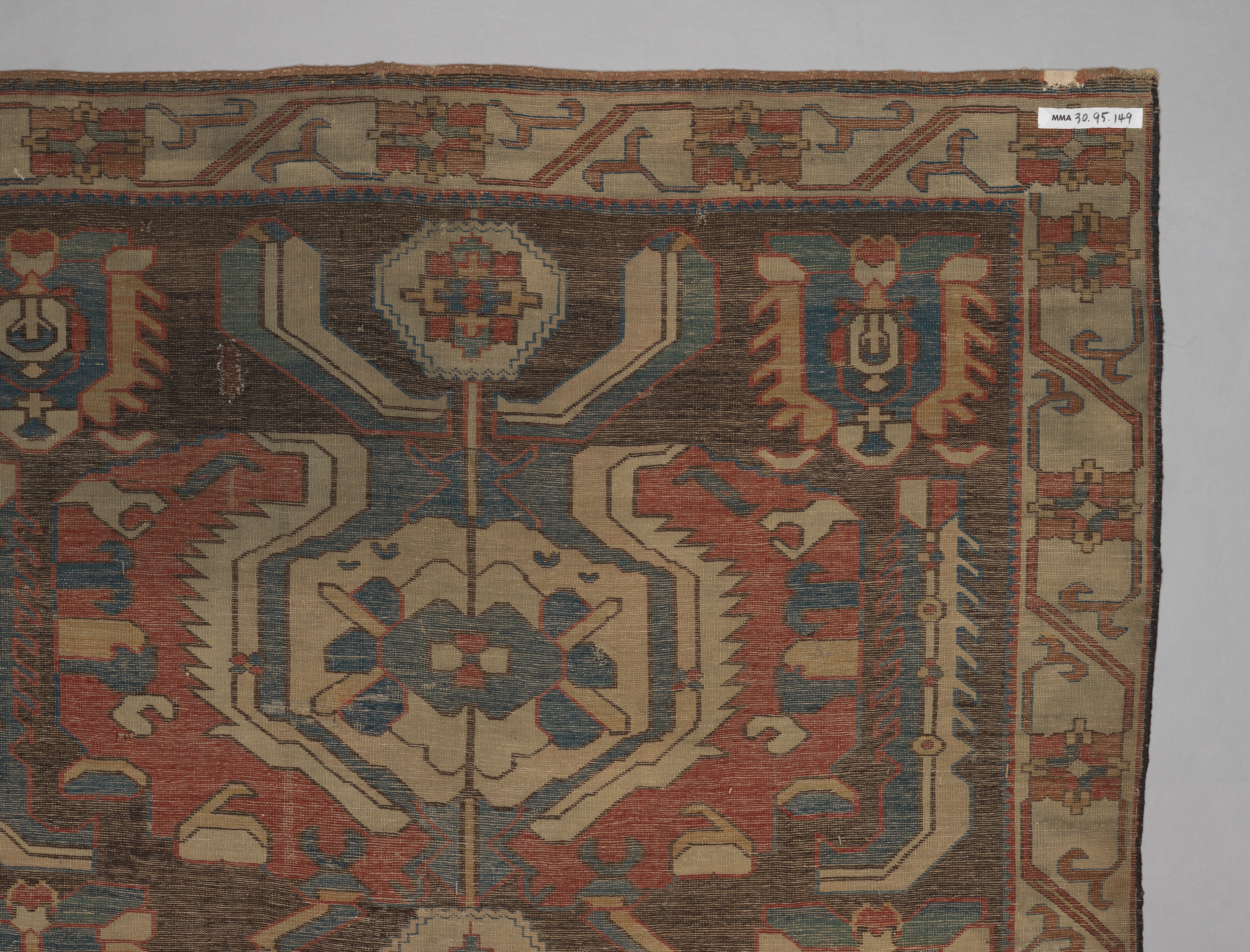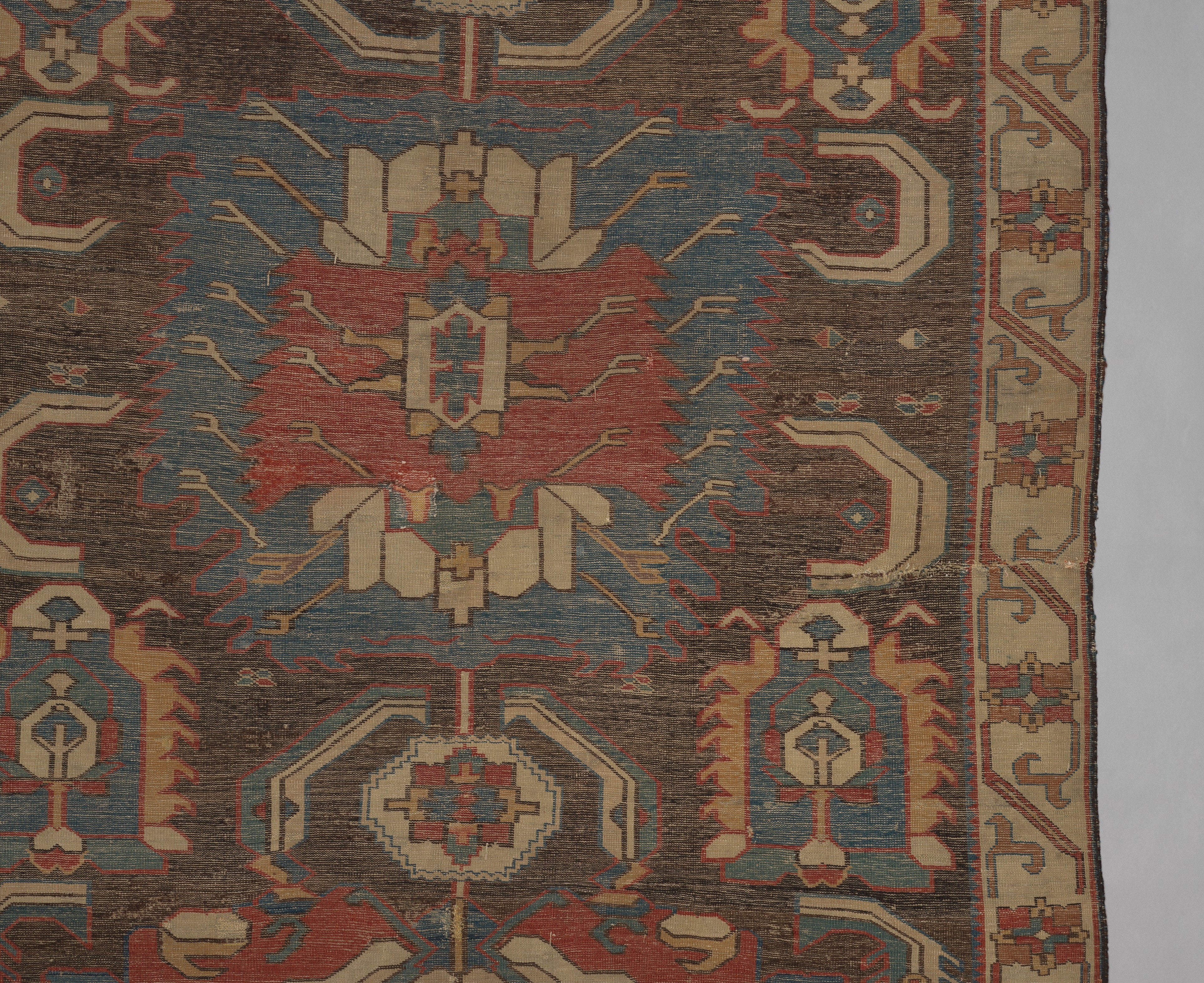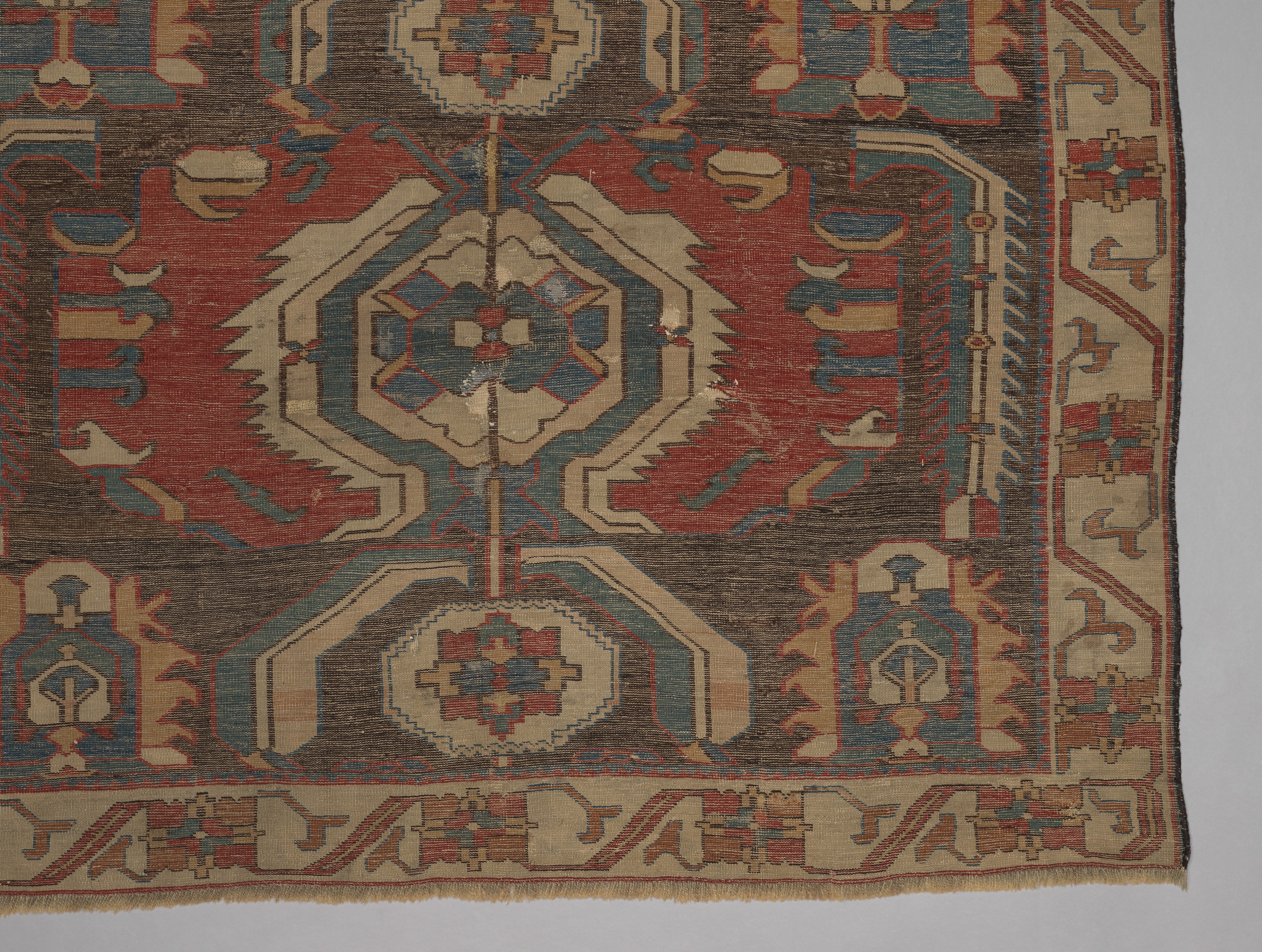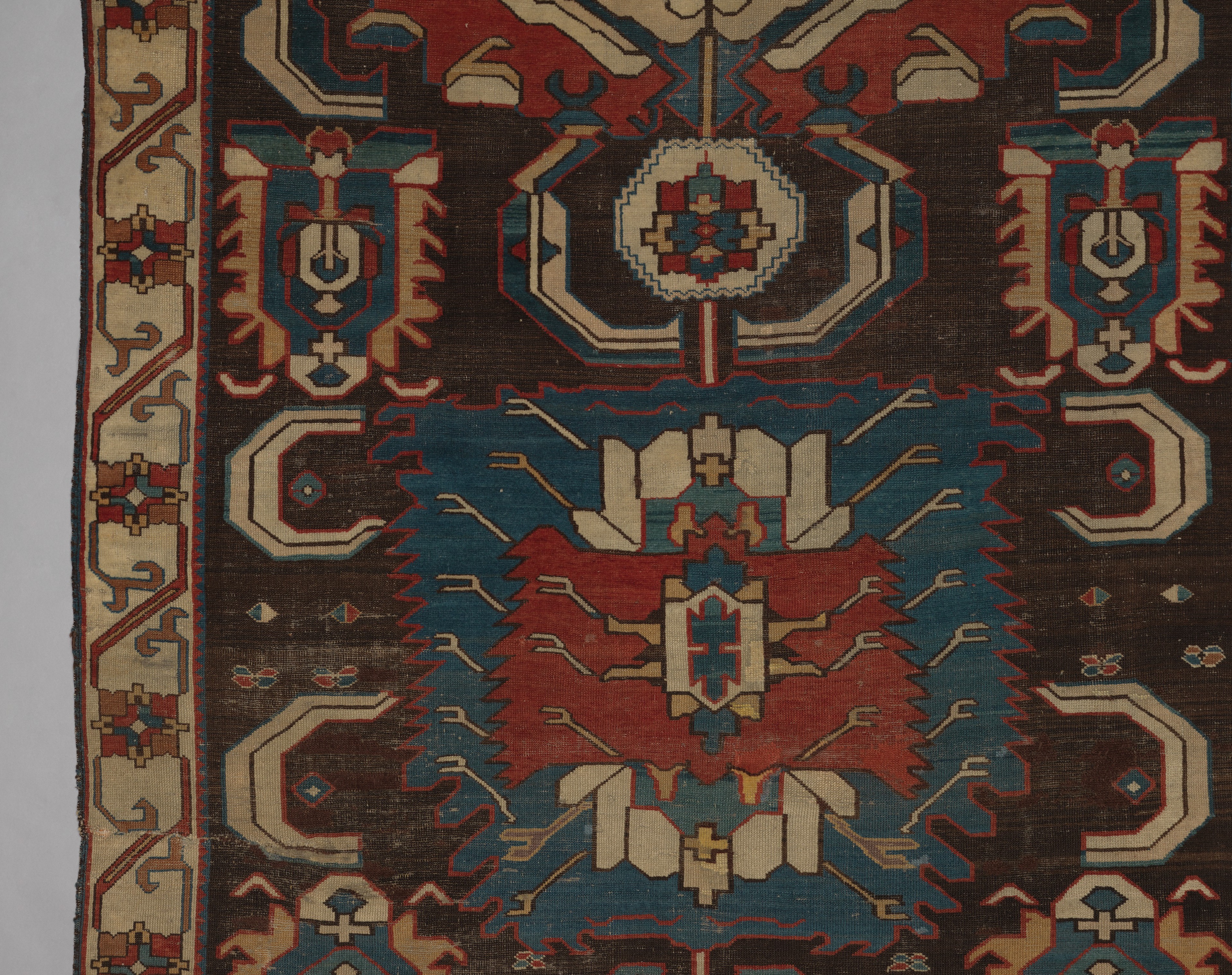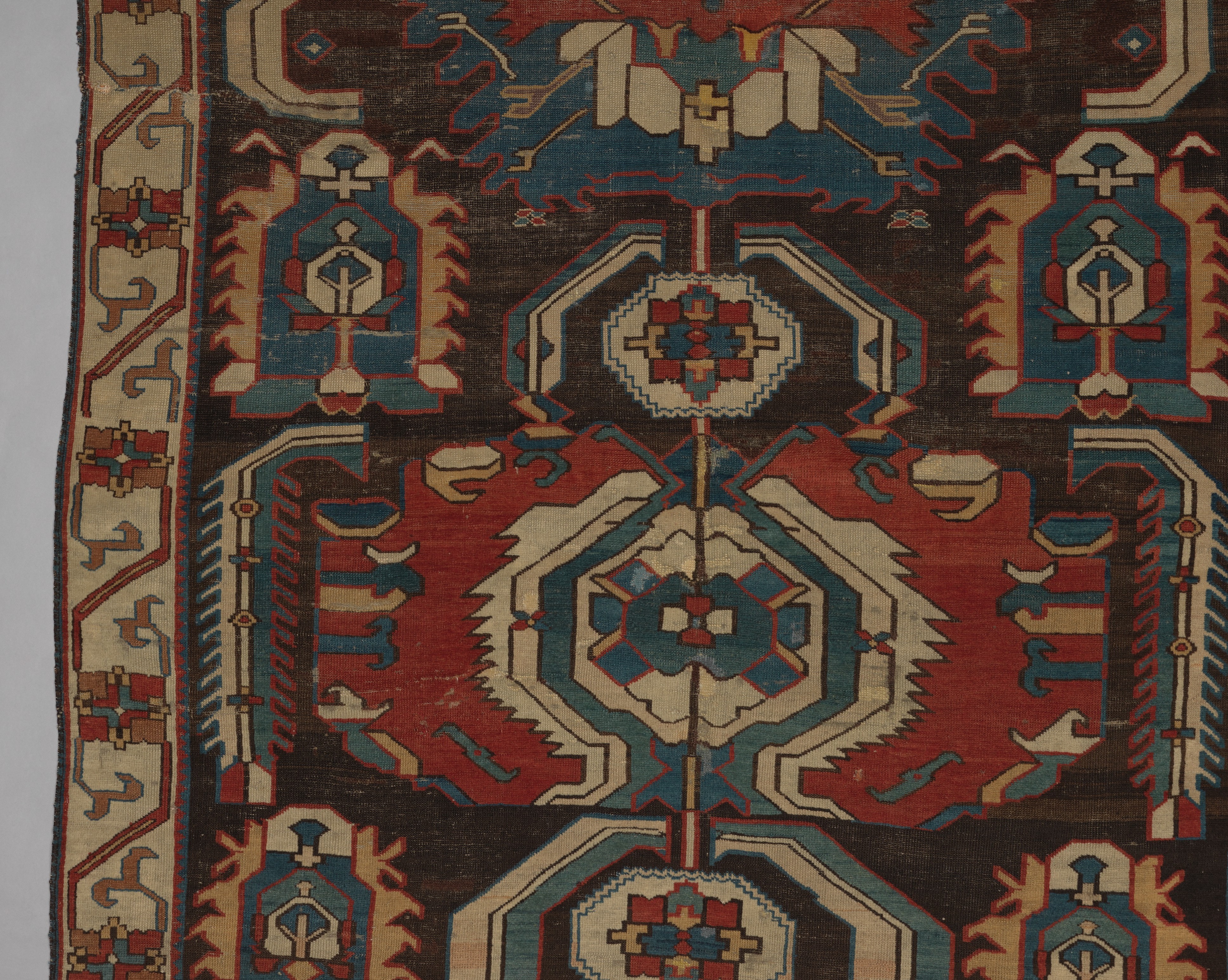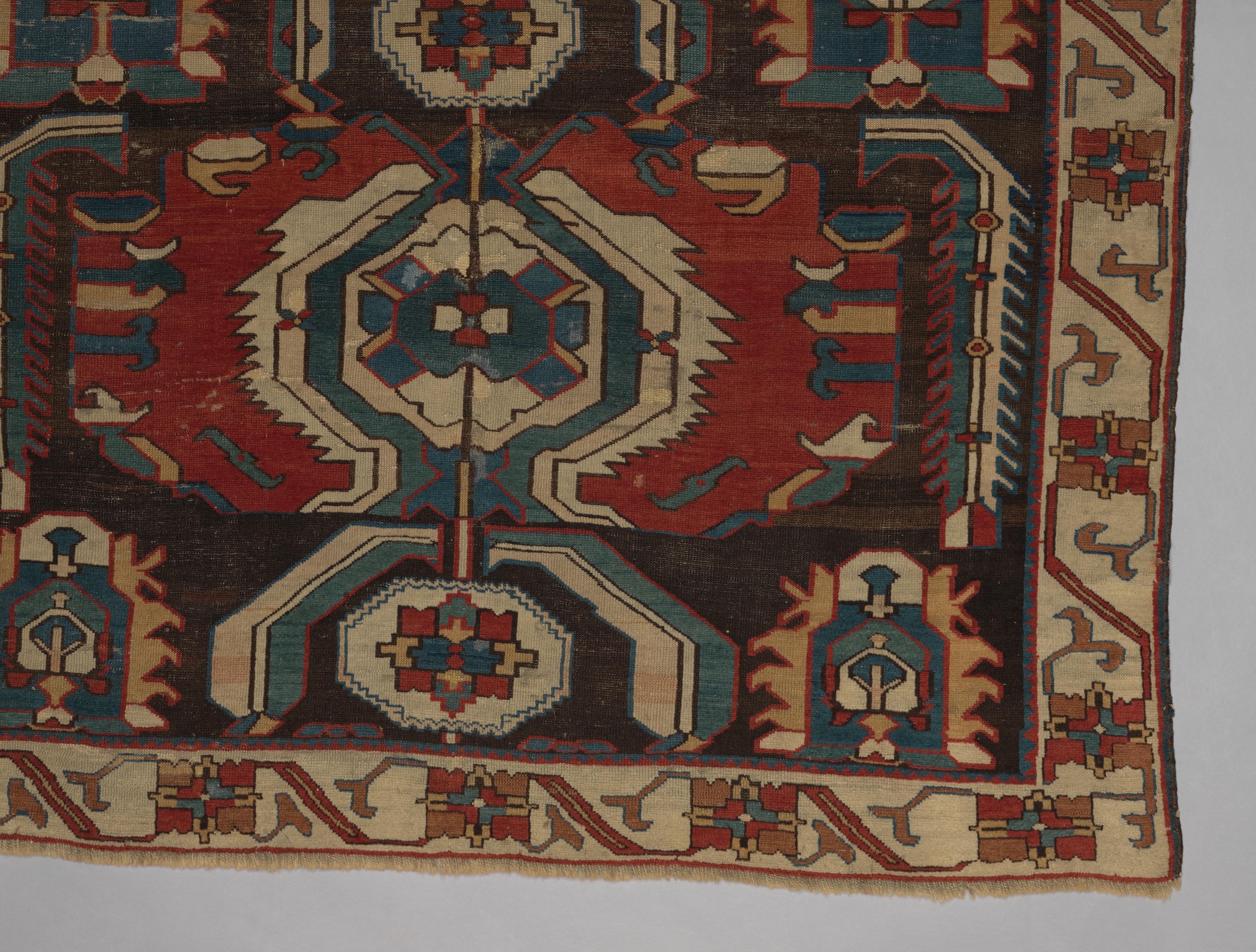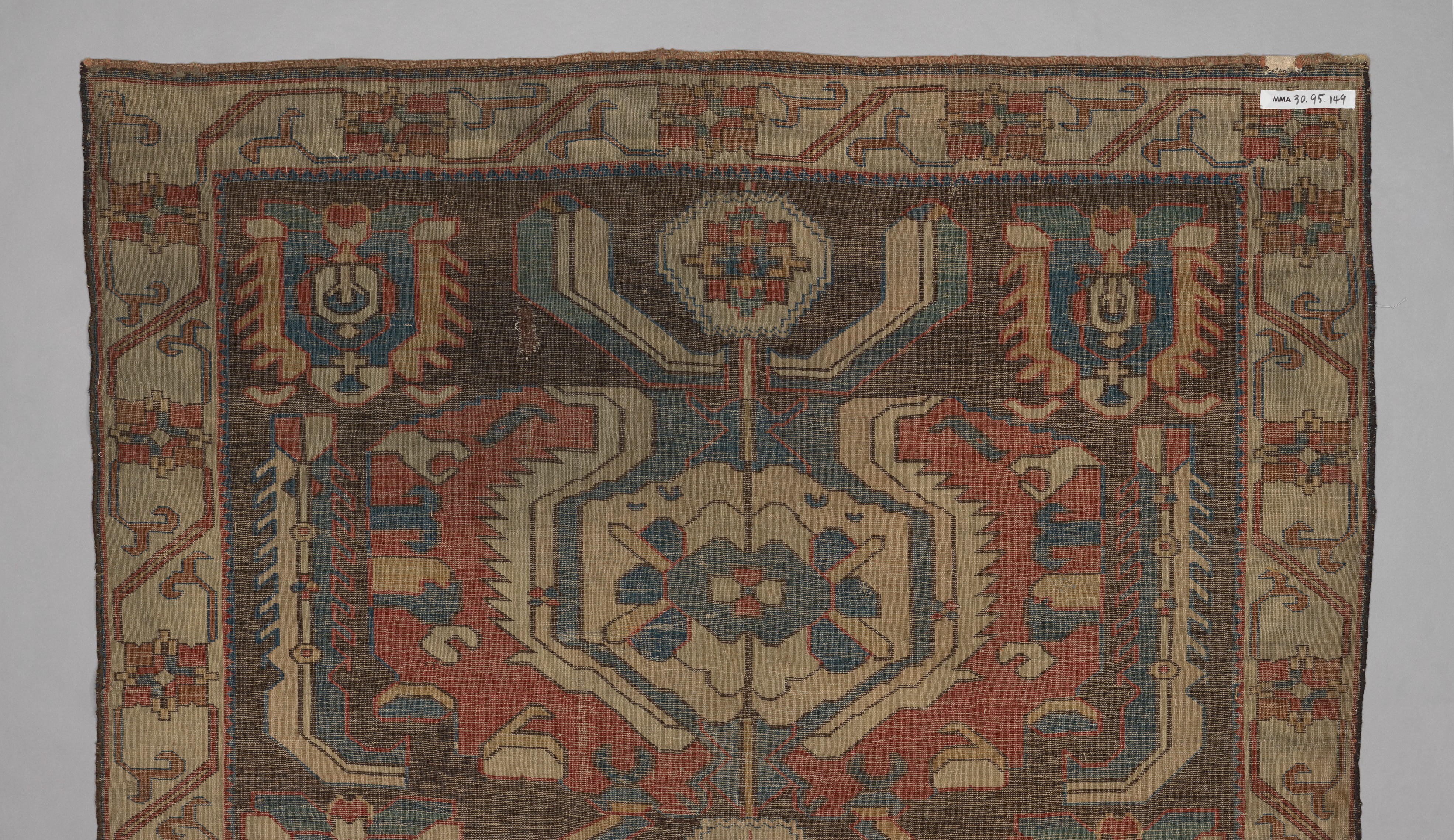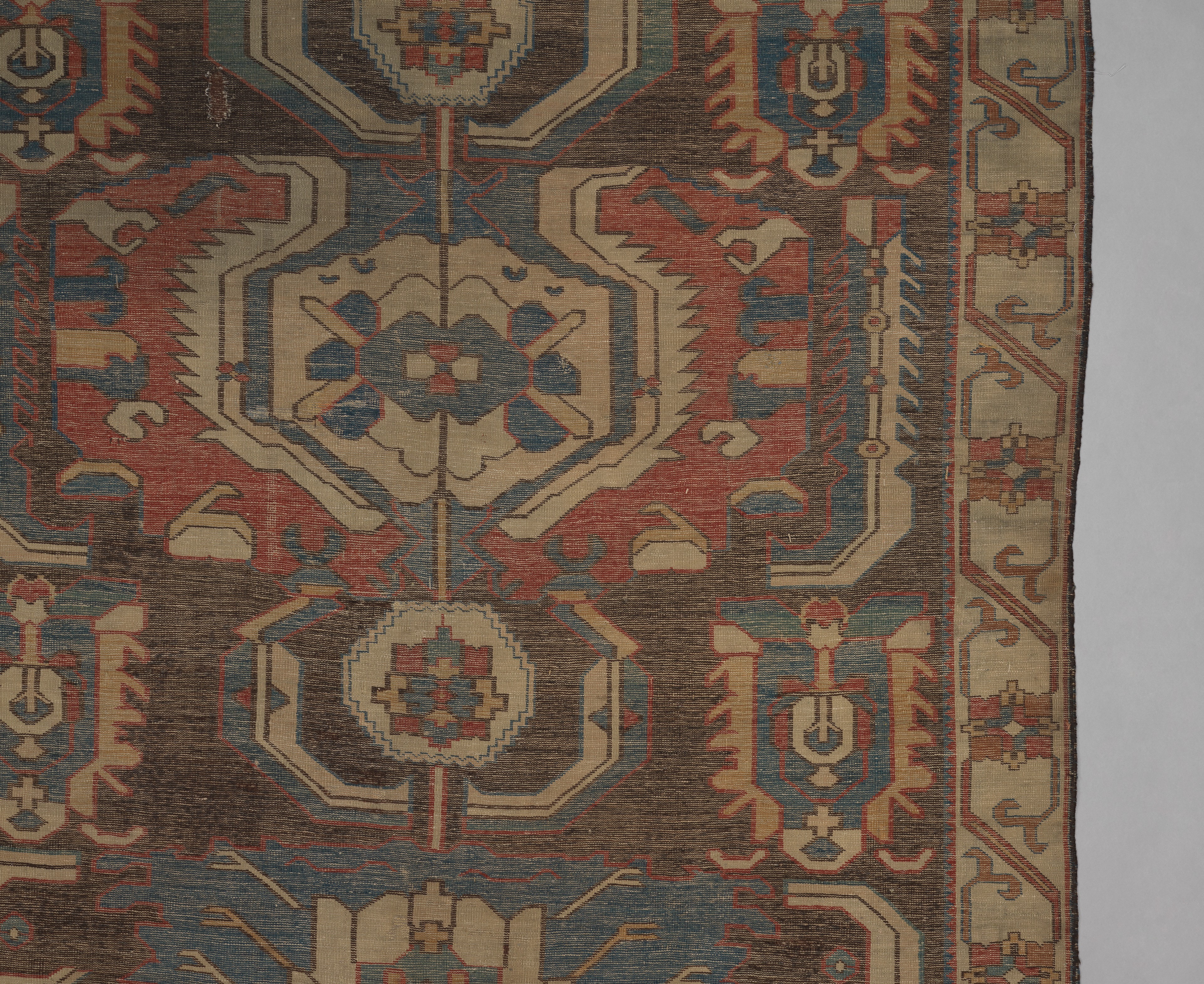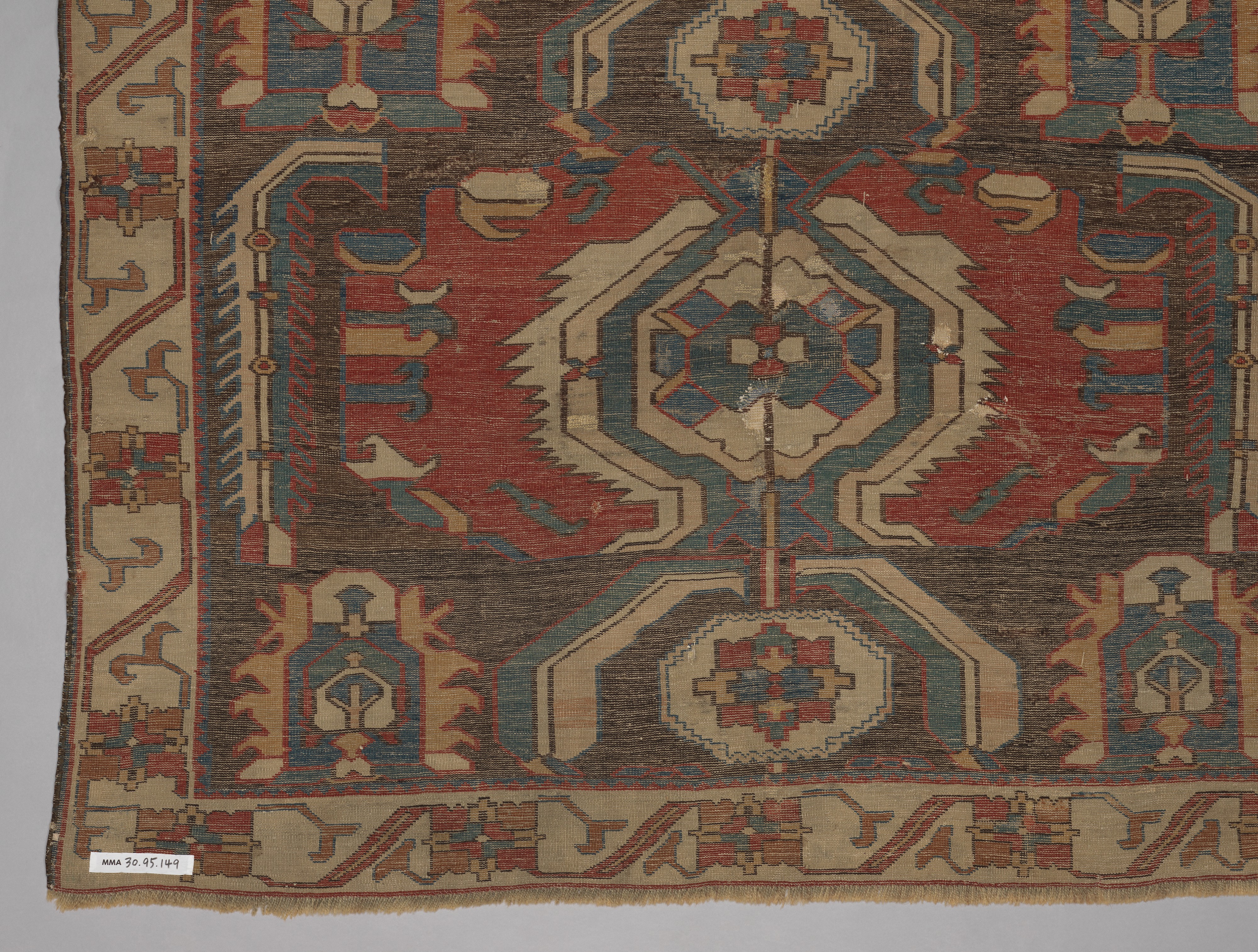Carpet with a Geometricized Medallion Design
Not on view
This large carpet is representative of the Transcaucasian weaving tradition with its bold overall design and contrasting rich color palette. A series of interlocking stepped lozenge-shaped medallions on a red ground and other warm colors, enclose a four-pointed star on a contrasting white ground at the center. The geometricized and stylized details depicting birds and animals, palmettes, lotus and other flowers are another distinguishing feature of the carpet. A few flowers with rounded leaves and the compositions repeated in the four corners, which depict animals and potted cypress trees, soften the overall geometrized composition and reflect Persian influence on this carpet. This powerful design is especially striking on a carpet of this large size. It was preferred by commercial workshops, where such carpets with a low knot-count were produced in large quantities for trade. Rugs from the broad Transcaucasian region are woven in diverse centers representing a multi-ethnic society in which Armenians, Turkic, Kurdish, Persianate, and other people lived alongside each other. While this diverse society may complicate the attribution to an exact workshop and its cultural identity, it may help explain the development of a shared repertoire of rich and colorful designs often found in these Transcaucasian rugs. Although the compositions relate to traditions that developed in large workshops in regions between Iran and Turkey, such rugs bear distinct features that are considered artistic hallmarks of the vast and diverse Transcaucasian region.
Due to rights restrictions, this image cannot be enlarged, viewed at full screen, or downloaded.
This artwork is meant to be viewed from right to left. Scroll left to view more.


